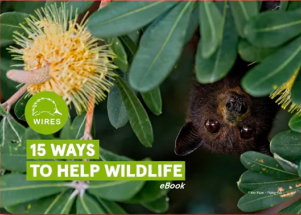Wildlife Friendly
Gardens
- Home
- What We Do
- Wildlife Information
- General Information
- Wildlife Friendly Gardens
Bringing Nature Back: How wildlife-friendly gardens can help urban wildlife
As natural habitats shrink, more native birds, mammals, reptiles, and frogs are moving into urban areas. However, most cities lack suitable environments for these creatures. Fortunately, many people are creating wildlife-friendly gardens to help. These gardens thrive on diversity, as plants offer food, shelter, and breeding sites—sometimes indirectly, by attracting insects that become food for wildlife.
Below are our top 12 tips for a wildlife friendly garden and yard:
- Plant native trees, ground cover and shrubs. Larger plants should be complemented by ground covers, grasses and small dense shrubs, as dense undergrowth provides protection for small birds and reptiles like blue-tongue lizards.
- Choose plants like eucalyptus that provide food for possums as well as providing food for flying-foxes in the form of nectar and pollen.
- Place possum boxes in a safe high place in your yard.
- Place a pond in a sheltered spot to provide water for birds and habitat for frogs.
- Provide large rocks for habitat for lizards.
- Allow mulch to build up as this will decrease the need for water and provide feeding opportunities and nesting material for ground birds and small mammals.
- Grassed areas are attractive for some bird species like magpies and noisy miners.
- Talk to your neighbours about planting to increase habitat in your local area.
- If you use netting & fencing, please only use wildlife safe netting and wildlife safe fencing.
- Don’t use any chemicals and pesticides in your garden. You might only be planning to kill snails but if native animals eat the poisoned snails they can be poisoned as well. Instead, please use only safe, natural, non-chemical alternatives for pest control and cleaning e.g. white vinegar and baking soda.
- Providing a simple birdbath in a place that is safe from cats. These need to be cleaned regularly and they should only be shallow or have twigs inside so that the birds can easily climb out.
- Leave leaf litter in your garden to attract insects and lizards and leave safe dead trees and hollowed limbs of live trees in your garden as nesting sites for birds.
15 Ways to Help Wildlife
Sign up to receive our monthly eNewsletter with wildlife rescue stories and updates on our work rescuing, rehabilitating, and releasing native wildlife.
